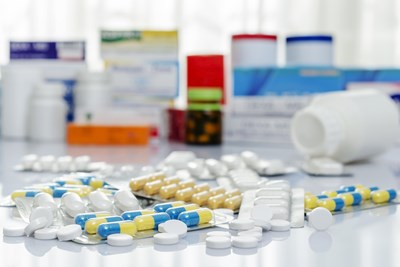Methicillin-resistant Staphylococcus aureus, also known as MRSA, is an infection that is caused by one of the strains of staph bacteria that has become resistant to most of the antibiotics that are typically used to treat them. According to the CDC, there are over 80,000 cases of MRSA in the United States each year, causing over 11,000 deaths annually.
Symptoms
Most staph infections begin as a painful, swollen red bump that might resemble a pimple or a spider bite. MRSA infections will usually be warm to the touch, full of pus or other fluids, and you might also be running a fever. The danger of these infections is that they can potentially burrow deeper into the body, which can lead to life-threatening infections in your bloodstream, heart, lungs, bones, or joints.
Causes
There are many different strains of the Staphylococcus bacteria that exist. Staph bacteria are often found inside the nose of about one-third of the United States population without ever causing any problems at all. If these bacteria enter the body through a cut or wound, they may cause minor skin problems. However, of the one-third of people who chronically carry staph bacteria, less than 2% carry the MRSA strain of staph.
Antibiotic resistance has developed as a response to the increasing number of unnecessarily prescribed antibiotics. Since antibiotics don’t kill every germ they are targeting, the bacteria that survive are able to evolve and mutate so they aren’t affected by the same treatment in the future.
Treatments
There are certain antibiotics that still work for MRSA strains of staph bacteria. However, antibiotics are not always used to treat MRSA in order to prevent further resistance from developing. Instead, your doctor may drain the painful abscess and keep the area clean until it heals. Antibiotics are only used when absolutely necessary.
Prevention
There are several things you can do to prevent becoming infected with MRSA bacteria. These include:
- Wash your hands: After touching things in a public place, you should wash your hands with antibacterial soap and warm water for at least 15 seconds. You can also use hand sanitizer that contains at least 62% alcohol if you are unable to physically wash your hands.
- Don’t share personal items: Staph bacteria are able to survive on inanimate objects, such as towels, sheets, razors, clothing, and athletic equipment, which makes it very easy to spread these germs to other people. For this reason, avoid sharing any personal items, especially in a locker room setting.
- Sanitize linens: Wash towels, sheets, and dirty gym clothes as often as possible in hot water to kill any germs that might be living on them. You can also use bleach if possible. Dry them in a hot dryer to further prevent the spread of bacteria.
- Keep wounds covered: If you have any cuts or abrasions, keep them clean and covered with a dry, sterile bandage until they are able to heal completely. Not only will this keep your cuts from becoming infected, but it will also prevent the spread of infection if your cuts or sores contain MRSA bacteria.
- Shower after athletic events: After games or practices, always shower immediately with hot water and soap.



